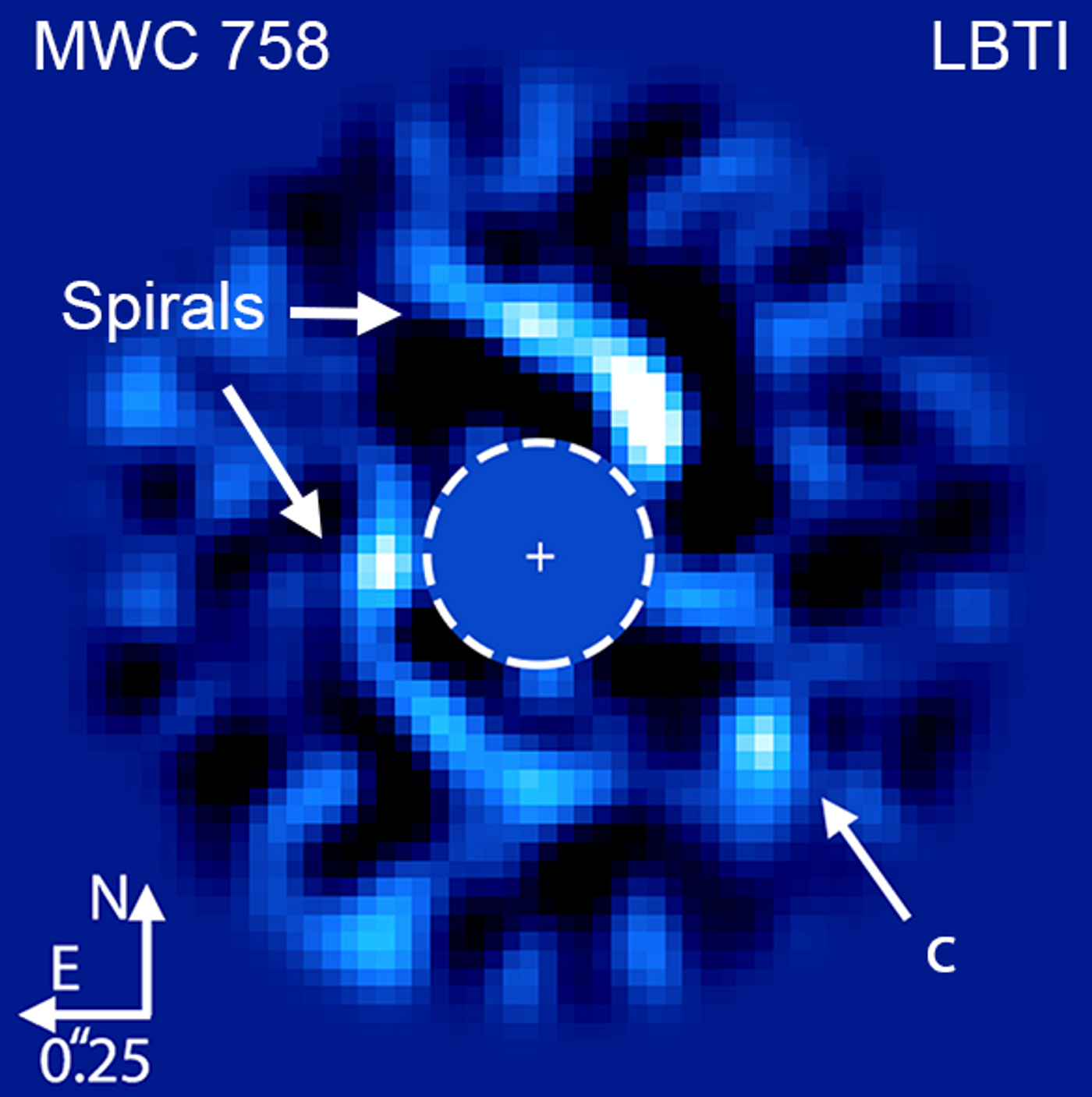Exoplanet Could Be Producing Spiral Arms in its Young System
A recent study published in Nature Astronomy examines how a newly discovered exoplanet, MWC 758c, could be producing spiral arms in its young system. MWC 758c is located approximately 500 light-years from Earth, and what makes this discovery so profound is that astronomers have been searching for evidence for how a young system’s spiral arms are created within protoplanetary disks. This study holds the potential to help scientists better understand the protoplanetary disks of young solar systems, as this system is estimated to be only a few million years old.
The MWC 758 planetary system is shown directly imaged by the Large Binocular Telescope Interferometer (LBTI) in infrared wavelengths. Theoretical models suggest that the newly discovered exoplanet, MWC 758C, is likely producing spiral arms in the protoplanetary disk encircling the young star. (Credit: K. Wagner et al.)
"Our study puts forward a solid piece of evidence that these spiral arms are caused by giant planets," said Dr. Kevin Wagner, who is a postdoctoral researcher at the University of Arizona (UArizona) Steward Observatory, and lead author of the study. "And with the new James Webb Space Telescope, we will be able to further test and support this idea by searching for more planets like MWC 758c."
For the study, the astronomers used what’s known as the direct imaging method from the Large Binocular Telescope Interferometer (LBTI) to observe in infrared wavelengths both the new exoplanet and the spiral arms within the young system. What makes LBTI unique is its capability of detecting infrared light in the same way as NASA’s James Webb Space Telescope (JWST). Through this, the astronomers were able to determine that MWC 758c is at least two Jupiter masses and orbits approximately 100 astronomical units (AU) from its parent star.
The Large Binocular Telescope Interferometer (LBTI) resides on Mount Graham in Arizona. (Credit: D. Steele, Large Binocular Telescope Observatory)
Along with being the first exoplanet detected within a protoplanetary disk, MWC 758c has been deemed as the “reddest” planet ever found, according to Dr. Steve Ertel, who is a lead instrument scientist on LBTI, and a co-author on the study. This redness made MWC 758c almost undetectable by less powerful telescopes attempting to observe in shorter wavelengths.
"We propose two different models for why this planet is brighter at longer wavelengths," said Dr. Ertel. "Either this is a planet with a colder temperature than expected, or it is a planet that's still hot from its formation, and it happens to be enshrouded by dust."
Going forward, the team hopes to use JWST to conduct follow-up observations of MWC 758c to determine which of the two models is correct.
How many more exoplanets will astronomers discover in protoplanetary disks in the coming years and decades? Only time will tell, and this is why we science!
Sources: Nature Astronomy, Wikipedia, University of Arizona News, Las Cumbres Observatory, NASA
As always, keep doing science & keep looking up!










